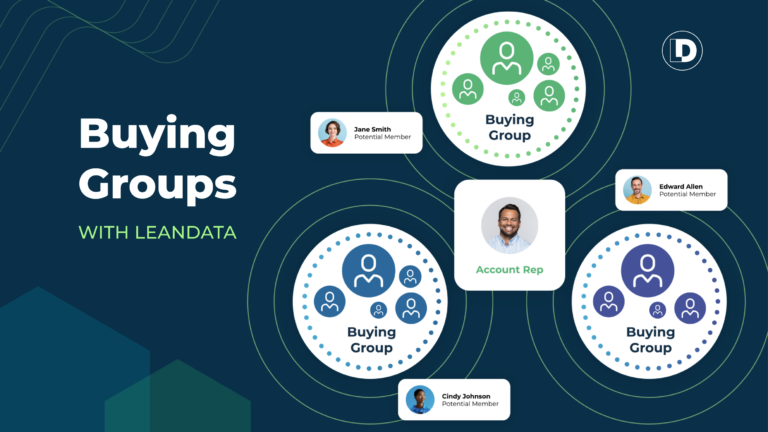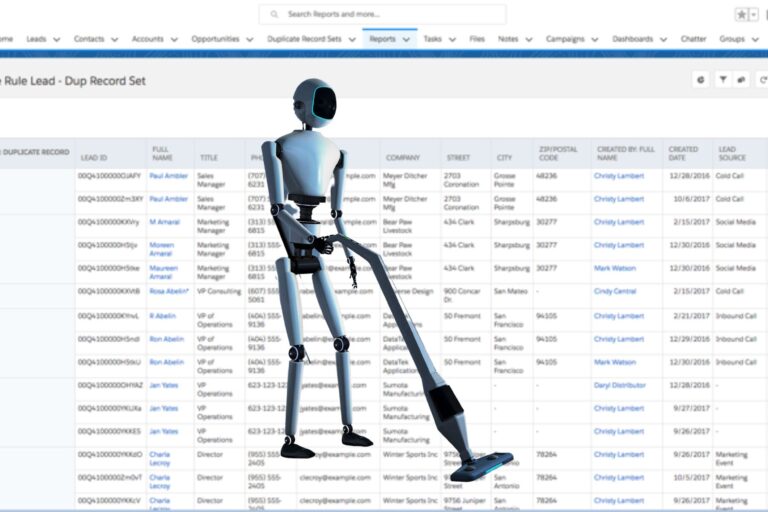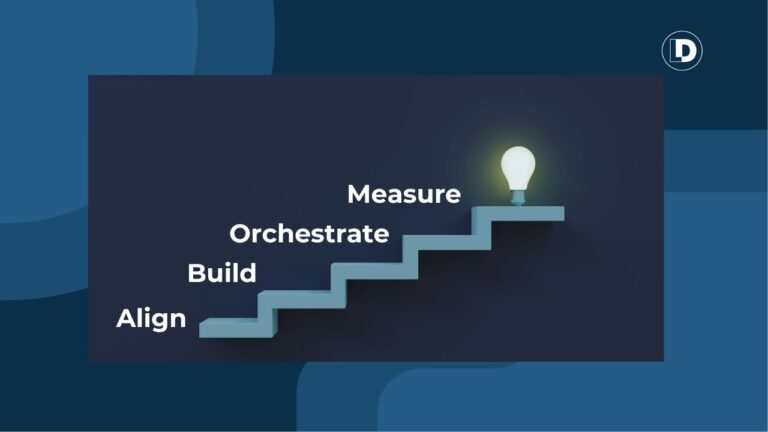How will you rise above the competition in 2025?
The answer for many sales and marketing teams lies in mastering Account-based marketing (ABM). When executed effectively, ABM becomes your organization’s competitive edge—fueling tighter sales alignment, larger deal sizes, higher win rates, and faster account progression.
Sound like the results you need to dominate in 2025?
In this article, we’ll drill down five proven ABM tactics that are essential for your 2025 GTM playbook.

Tactic #1: Personalizing Outreach at Scale
First, Account based marketing (ABM) is a go-to-market strategy oriented around the customer experience. It puts the customer first from start to finish, infusing relevance to every stage of the buyer’s journey.
In ABM, personalization is KING. But let’s be clear: personalization isn’t about awkwardly inserting someone’s first name into every sentence of an email or ad. It’s about creating meaningful, tailored interactions that truly connect with your audience.
So how can teams scale that personal touch across hundreds, or even thousands, of accounts?
The answer lies in taking a signal-based approach.
“When we interject personalization, whether that be at the account level, the ad level, or the account segmentation level, we’ve seen a significant increase in engagement, conversions and pipeline creation. So personalization, for me, is all about understanding your audience.”
Kristin Kolb Director, Account Based Marketing, Workiva
Collecting Buying Signals
“Signal” may just be the buzzword of the year for revenue teams–it’s dominating LinkedIn feeds, podcasts, and SaaS blogs alike. But what does it really mean?
Signals are the digital crumbs your prospects and buyers leave behind as they navigate their buying journey.
These signals come in many forms:
- Zero-Party Data: Gated content forms, event registrations, survey responses, onboarding questionnaires
- First-Party Data: Website behavior, demo request form, content downloads, free trials, email campaign engagement, webinar attendance, on-site searches, abandoned forms
- Second-Party Data: Partner-shared leads, account insights from resellers, event attendee data, co-marketing campaigns, joint customer data, referral program data, syndicated content engagement
- Third-Party Data: intent data, website visitor data
Operationalizing Buying Signals
To scale personalization effectively, revenue teams need to harness these signals through the right processes and technology:
- Centralize and Integrate Data Sources: Create a single source of truth, typically within your CRM, to combine all buying signal data.
- Prioritize and Score Signals: Rank accounts and leads based on intent and engagement to focus efforts on the highest-priority opportunities.
- Personalize Outreach with Context: Tailor messaging and interactions based on the specific signals each account or lead provides.
- Streamline Handoffs Between Marketing and Sales: Establish clear processes for passing qualified buyers to sales with all the necessary context.
When done right, this approach allows teams to deliver the level of personalization ABM demands—at scale—while keeping the customer experience at the center of every interaction.
“Our ABM go-to-market strategy of focusing at scale and increasing alignment with sales has led to an increase in average deal size, win rate, and accelerated account progression when we leverage these tactics.”
Kristin Kolb Director, Account-based Marketing, Workiva
Tactic #2: Maximizing Tech Integrations
Technology is certainly a key element in ABM, but only when it’s integrated seamlessly into your strategy.
Mikayla Wilson, Senior Data Analyst and ABM expert at Workiva, and recipient of the 2024 OpsStars ABM Program of the Year award, recommends these five tips for optimizing your tech integrations:
Collaborate with Operations Partners
Connect your ABM team with the relevant operations counterpart—whether it’s RevOps, SalesOps, or MarketingOps. These professionals bring unique perspectives and valuable insights into your tech integrations that can strengthen your ABM strategy and processes.
Define Your Reporting Goals with Data Partner Help
Establish clear reporting objectives and identify key metrics from the outset. Involve an internal data partner early in the process to uncover gaps in your data structure. This ensures accurate reporting on your goals and metrics.
Implement a Robust Tagging Structure
ABM hinges on identifying the right account segments. Once you’ve pinpointed these segments, ensure accounts are tagged appropriately to maintain organization and streamline workflows.
Set Clear Buying Triggers
Define specific triggers for your account segments, including both entry and exit points for campaigns. Seamless integrations between your CRM and automation tools are critical to managing how accounts move through campaigns. LeanData is a strong player here.
Leverage Your Current Tech Stack
Regularly review product releases from your existing tech vendors to spot potential solutions for integration gaps. Often, updates within your current stack can provide the functionality you need without having to buy a new tool.
“Pay attention to product offerings in product releases in your current tech stack, especially when you’re looking at [technology] gaps… if you can use your current tech stack and augment that, I think it’s an awesome solution. As much as we’re advancing as a company ourselves, our vendors and our tech partners are also doing that too, and that can really help us change our game.”
Mikayla Wilson Senior Data Analyst, Workiva
Tactic #3: Integrate AI to Uncover High-Value Target Accounts
Almost all of the ABM technology found in tech stacks today have some form of AI. It’s practically become table stakes. The primary use case of AI for ABM is to help marketing and sales teams identify accounts where they are most likely to win.
Some other uses cases for AI in account-based motions include:
- Predictive Analytics: AI uses historical data and behavioral signals to predict which accounts are most likely to convert. Think 6sense.
- Intent Data Analysis: Identifies accounts actively researching topics related to your product or service. Think Bombora + Qualified.
- Personalized Content Recommendations: AI can tailor content to the specific interests and needs of target accounts. Think Tofu.
- Chatbots for Personalized Engagement: AI-driven chatbots can engage with your target accounts and serve up relevant messaging based on their profile and behavior. Think Salesloft/Drift.
Last, through data analysis, AI can help sales and marketing teams understand where they win and where to focus their efforts.

Tactic #4 Engaging Decision Makers with a Buying Groups Approach
From an ABM perspective, the concept of B2B Buying Groups is not new. An ABM motion has always been focused on multiple people within an account rather than a single lead.
However, as the B2B Buying Groups motion has gained greater traction, marketers are now looking deeper into the number of buying group members either engaging or not engaging. In fact, a B2B Buying Groups motion is often referred to as the next evolution of ABM.
Further, it’s not just about having buying group members in your database and leaving it up to sales to “multi-thread.” A Buying Groups motion is about operationalizing the buying group as a whole to move them along the buying journey faster.
In an ABM playbook, this looks like actively surfacing and targeting buying group members. Technology like LeanData Blueprint and Orchestrator will identify missing members of the buying group, score buying group engagement, and route a qualified buying group to the appropriate sales team member.
New to Buying Groups? Learn how cybersecurity pioneer Palo Alto Networks’ Buying Groups motion pilot triggered a powerful chain reaction: fewer canceled meetings, increased pipeline growth, accelerated deal progression, and ultimately, greater revenue.
Tactic #5 Mastering Speed to Lead for Faster Pipeline Progression
It’s B2B common sense that responding to leads quickly is crucial for conversion. In fact, a study by Lead Response Management, revealed that companies are 21x more likely to qualify a lead with a fast response time instead of waiting for over 30 minutes.
Faster speed to lead in an ABM playbook looks like:
- Seamless marketing to sales handoff: Develop a strong partnership, track the data, and align people around response times. Consider implementing SLAs.
- Mastering the qualification process: Look closely at your lead scoring model, and using data, iterate until the highest quality accounts are sent to sales. Prioritize quality over quantity at all times. This builds trust with sales.
- Capitalize on tools that accelerate speed to lead: Look into tools that reduce lead processing time, including data cleansing, enrichment, meeting scheduling, routing, and distribution.
Setting Your ABM Playbook Up for Success
As organizations look ahead to 2025, successful ABM comes down to putting the customer first while using data and technology intelligently.
The most effective teams focus on understanding their customers through careful signal monitoring, seamless tech integration, and swift response times.
They recognize that meaningful personalization and engaging entire buying groups matter more than ineffective volume plays.
While AI and new tools can help, the fundamental goal remains simple: create valuable connections with the right customers at the right time.










